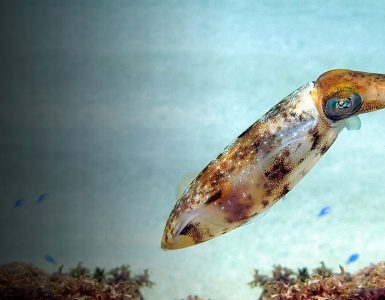Plants just like animals can adapt to their surroundings to improve the chances of survival. This phenomenon is noticed by some researchers in a shrub, ‘Tetraena’, that has shown elevated survival skills when exposed to mild stressors during germination.
From the germination of the seed to the development plant, many extrinsic factors could go wrong and threaten the survival of sessile plants. Those factors include water deficit, flooding, salinity levels, and cold or heat stress. These factors can produce harmful free radicals like hydrogen peroxide in the plant thus threatening its existence. Heat stress is one of the most common stressors. By definition, the rise in more than 5°C or more than the optimal temperature can cause heat stress. The worst effect of heat stress is on the proteins of the plant, which can dysfunctional the internal balance of the plant.
To cope with such stressors, especially heat, the plant can start their survival instincts by changing or modifying themselves at the genetic level. Those modifications in gene expressions thus encode for modified proteins also known as Heat-shock proteins (Hsps), with enhanced survival skills under heat stress. These Hsps can preserve cellular homeostasis by inhibiting irreversible protein accumulation, which can be triggered by heat stress. There are 5 different types of Hsps based on their molecular weight, Hsp100, Hsp90, Hsp60, and small Hsp.
Tetraena is a shrubby plant with tube-like flowers that range from white to orange in petals. There are many types, mostly distributed across Canary Islands, Saudi Arabia, South Africa, and China. Around 8 species are found in Saudi Arabia alone. It has a unique ability to survive in sandy salt habitats and deserts.

Magda Elsayed explored the effects of heat stress on the plant proteins in three different species of Tetraena at the Department of genetic origin at Biochemistry Lab in Egypt. The researcher collected 3 different species of Tetraena from several regions of Saudi Arabia and allowed them to germinate in vitro. Later the extraction of the desired proteins was done by centrifugation.
The results of the experiment showed, synthesis of new proteins and degradation of polypeptides under high temperature. Similarly, the expression of a new protein of different molecular weights could have added to the heat tolerance ability of the plant under stress. The over expression of some proteins at different times of germination can indicate enhanced heat tolerance. The small Hsps can attach to the denatured protein, thus preventing its irreversible unfolding or aggregation. The response of the 3 different genotypes was very different in its expression to heat stress.
The formation and expression of stress-specific, heart-specific proteins in the Tetraena plant are associated with its ability to adapt to heat in the very early hours of germination. Future studies are required to explore the identify the proteins involved in the protein.
Keywords:
Heat specific proteins, superoxide dismutase, heat stress, oxidative stress, gene expression, high temperature, Tetraena
















Add comment